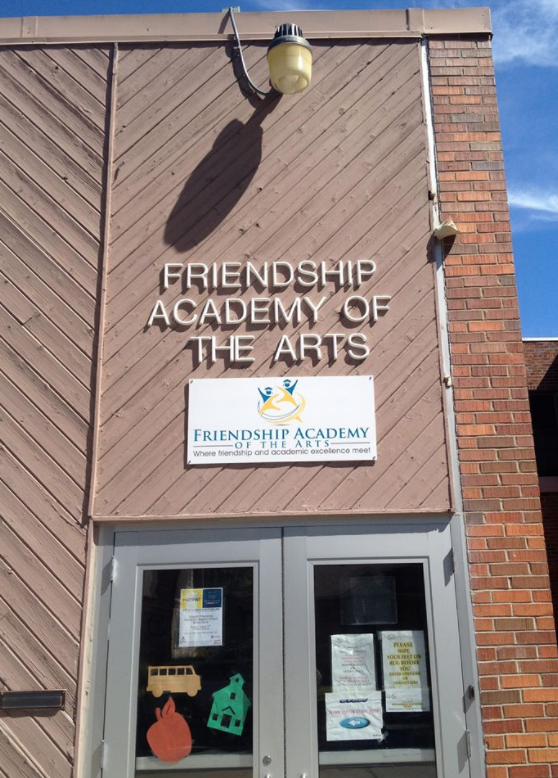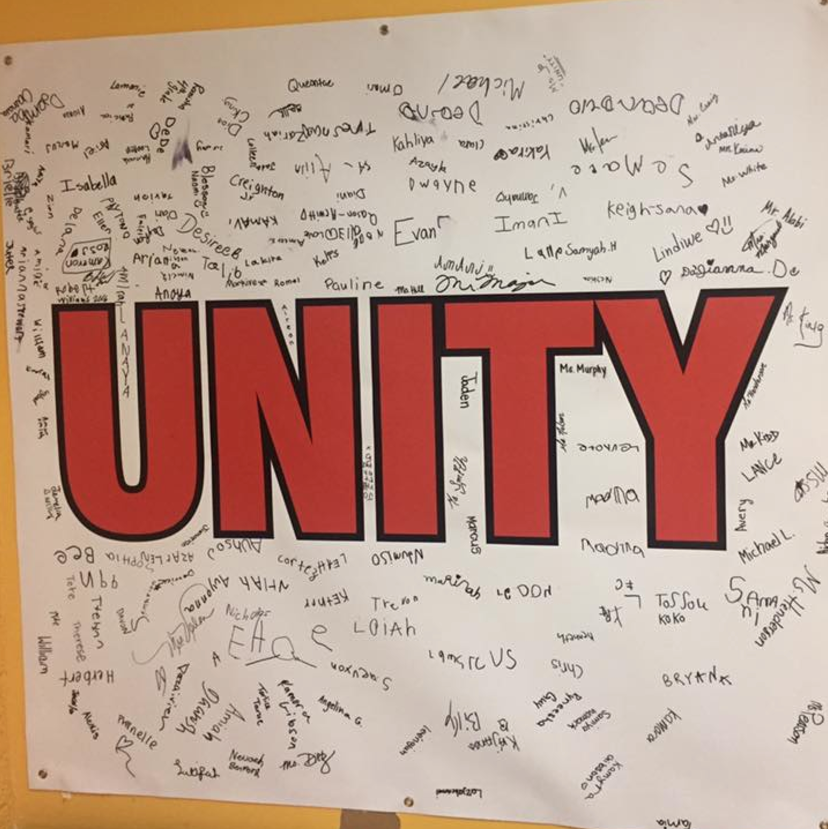Every weekday morning at 8:20 am, Dr. Charvez Russell, executive director of Friendship Academy of the Arts (FAA), a K-6 charter school in the Longfellow neighborhood of South Minneapolis, joins his students in the cafeteria. He delivers a ten-minute inspirational message, drawing on books, articles, and recent events to extol the virtues of respect and leadership, and making sure to use animated hand gestures to engage the younger students.
The point of addressing the students, according to Dr. Russell, is to help students set aside the “backpack of challenges” many of them face at home, and see themselves as confident and capable learners in the school day ahead.

By 8:45 am, students have settled into mathematics. In every classroom, the students are engaged, working through challenging problems. In the kindergarten classroom, a flurry of excited hands fly up after the teacher, Ms. Jone’t Henderson, asks, “Friends, If I wanted to buy a lollipop for five cents, what coin would that be?”
Ms. Henderson calls on a student who does not give the correct answer on the first try. However, instead of simply pointing out the mistake, Ms. Henderson encourages the student to try again. On the second attempt, the student gets it right and Ms. Henderson offers praise. The pride on the student’s face is evident.
Ms. Henderson asks another question; one student prematurely blurts out the answer. Rather than squash the student’s enthusiasm, she praises them then politely reminds the class to raise their hand so that their friends can have the opportunity to answer. Ms. Henderson asks another question, and when the same student raises their hand this time, she thanks them for doing so. The student smiles in response.
This is what FAA is all about. Within fifteen minutes, Ms. Henderson has cultivated a culture of joy and eagerness for learning and a safe space where students can make mistakes.
From the Brink of Closure to National All-Star
Recently, FAA was recognized by Secretary King as a 2016 National Blue Ribbon School. Only five schools in the state received the honor (339 nationally), which is awarded to schools for high levels of student achievement and closing the achievement gap amongst student groups.
FAA is unique among the other Minnesota awardees in that a majority of their student population are students of color, 97 percent, and qualify for free-or-reduced priced lunch (FRPL), 91 percent. The other schools are majority white and the highest percentage of FRPL students is 31 percent.
FAA’s accolade is especially noteworthy because five years ago, in 2011, they were threatened with closure by their former authorizer, Minneapolis Public Schools (MPS) for consistently low student achievement and poor governance. Instead of folding, FAA leaders, with the help of the Center for School Change (CSC), convinced MPS that they would take key steps to fix these issues.
MPS’s Office of New Schools, the district’s former authorizing wing (MPS stopped authorizing chartered schools in July 2016) agreed that FAA could use their own strategic plan if they met two conditions: they had to make some changes to their board, and they had to contract with a high-performing charter group of their choice. They agreed to make the board changes, contracted Eric Mahmoud, founder of Harvest Prep and Seed Academy, and got to work.
In the five years since, FAA has exceeded all expectations. From 2010-2015, FAA has grown 43 percentage points (40 to 83) in reading proficiency and 70 percentage points (20 to 90) in mathematics proficiency. In recognition of their academics gains, the Minnesota Department of Education (MDE) designated FAA as a “Reward” school during the 2014-15 and 2015-16 academic years, which is their highest rating for Title 1 schools.
How has FAA been able to turn around their school so dramatically? What is their secret sauce? According to Dr. Russell, FAA’s success cannot be attributed to single a program or curricula. Rather, it’s all about relationships.
Student-Teacher Relationships at the Center of Everything
A growing body of research stresses the importance of strong student-teacher relationships. An April 2016 report by Stanford University found that the quality of the teacher-student relationship is one of the strongest predictors of classroom behavior. A 2011 report by the Consortium on Chicago School Research at the University of Chicago found that strong teacher-student relationships are often correlated with school safety, which in turn leads to higher student academic achievement.
FAA has been very thoughtful with how they have rebuilt the relationships between their students and teachers. Rather than try to change the student, the school has provided extensive training to shift teachers’ mindsets and pedagogy.

Students sign their names to a banner proclaiming the importance of unity.